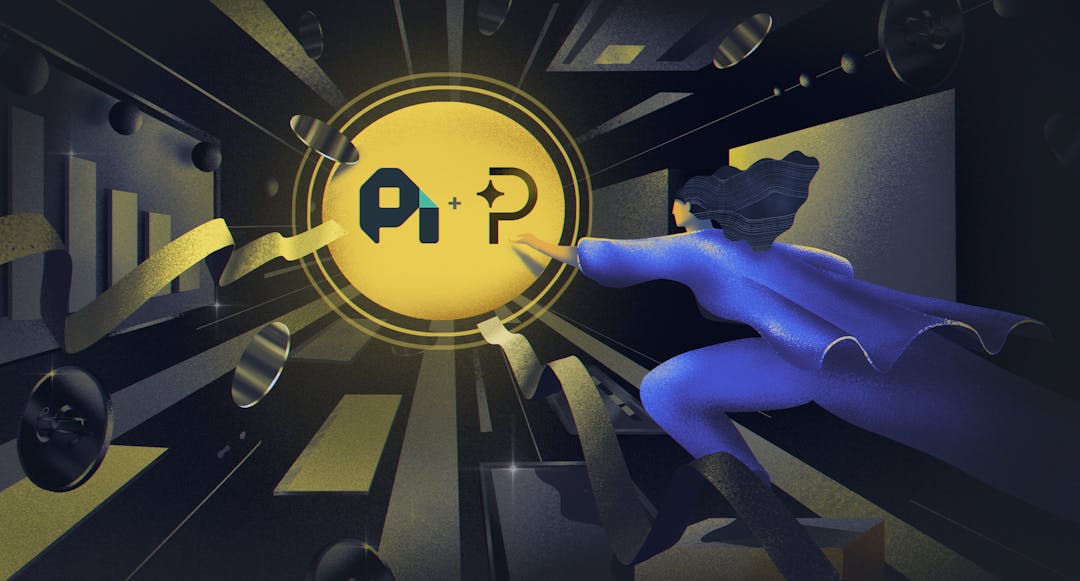Recent world events, including the pandemic, have put a strain on B2B connections and disrupted supply chains in various businesses.
Declining economic interest in some industries and rising demand in others have produced a highly unpredictable environment that keeps putting pressure on costs and businesses' capacity to manage risks and ensure operational continuity.
These uncertainties, along with a growing shift to digital channels, produced a great need for price discipline, a better collective approach across sales teams, and flexible pricing management strategies that might help organizations serve their customers efficiently and equitably in an online environment.
What is dynamic pricing?
Dynamic pricing is also known as surge pricing or time-based costing. Firms use this strategy to assess current market requirements and set adaptable prices for products and services. In a sense, it's a form of pricing discrimination.
To identify the best pricing strategy for your product or services, consider factors such as the customer propensity to acquire an item at a specific moment, supply and demand, competitor prices, and other external market pressures.
Dynamic pricing is a relatively standard practice in several industries, including public transportation, electricity, shopping, entertainment, leisure, and hospitality.
The dynamic pricing discussed in this post is explicitly tailored to web-based businesses, which have exploded significantly in recent years. The internet allows vendors to easily adjust their prices, which are affected by fluctuations in demand.
As a result of dynamic pricing, you may modify predetermined price settings. Your decision to do this may be impacted by current-day requirements and trends.
8 types of dynamic pricing
Dynamic pricing became popular in the ecommerce market in 2015, but it is expected to grow significantly in use in 2022. Why?
Traditionally, dynamic pricing has been a method that was only available to a select few sellers, such as Amazon, because of its hefty implementation price tag. There are now many low-cost services and solutions available for practically every business type. As a result, this year will likely see a B2B acquisition race, with early adopters likely to outperform their competition. There are several types of dynamic pricing strategies, some of which include:
1. Dynamic pricing based on groups
These include discounts for specific identified groups, such as public servants and senior citizens. This type of dynamic pricing is typically used for promotions and to target various price sensitivities.
2. Dynamic pricing based on time
This pricing strategy covers a wide range of scenarios. It's common in businesses where service or product demand fluctuates throughout the day. Alternatively, your corporation may wish to provide incentives to encourage purchasing for various reasons. Here are a few examples to get you started:
- Varying rates sometimes benefit transportation enterprises greatly. An example of this is decreasing taxi fares at night to encourage usage.
- With each new collection, ecommerce retailers can reduce the price of previous collections to get rid of obsolete inventory.
- Several delivery businesses demand an additional fee for same-day delivery.
3. Cost-plus pricing
Cost-plus pricing simply means selling a product you produce for a higher price. Many organizations use this strategy as it is the most basic pricing method.
4. Competitor-based pricing
Competitor-based pricing is a costing technique in which a corporation determines the cost of its services or products after studying its competition.
5. Value-based pricing (price elasticity)
Organizations use value-based pricing to cost goods and services at a price that they feel customers are willing to pay. Rather than estimating manufacturing costs and adding a conventional markup, companies assess the value perceived by customers and charge them appropriately.
6. Price skimming
Price skimming is a pricing method wherein businesses charge the maximum product entry price that customers can afford and then slowly decrease that sale value over time.
As clients' requirements are met, the company significantly reduces the cost of their products or service to appeal to price-sensitive individuals.
7. Bundle pricing
Bundle pricing is a pricing method in which companies group several products into one and sell them for a specified price instead of charging separately for products or services.
In addition to items and products, businesses may use this pricing method to price a range of services. Bundle pricing may help grow revenue since it portrays items as having a higher overall worth.
8. Penetration pricing
The penetration pricing strategy is frequently utilized when a new firm enters a market or an established business attempts to dominate it. Companies do this by offering cheaper costs than their competitors.
Of course, this cheap pricing will not last for long. Businesses gradually raise prices when they achieve a particular consumer base and demand level.
Dynamic pricing examples
Several business types can benefit from a dynamic pricing strategy, including:
Ride-sharing services
Customers pay the pricing that ride-sharing businesses like Uber set based on demand. Whether it's a national holiday, or a storm, the price of fares and the amount of time passengers must wait varies based on dynamic pricing decisions.
The first reason dynamic pricing is a good idea for ride-sharing companies is because it can boost the supply of drivers in a specific region by strategically raising their pay.
Another good reason is to lessen demand for rides and wait times. Customers unwilling to pay higher prices during peak hours will either look for another option or wait for pricing to return to normal.
Airline dynamic pricing
Airlines have customarily used static pricing. Depending on reservation booking designators (RBD), an airline develops its pricing structure with a restricted number of price points. Dynamic pricing could be a huge benefit to these companies if adopted.
BnBs and hotels dynamic pricing strategies
Seasons and specific periods of the year, such as festivals, national holidays, or events, impact costs in the hotel industry.
Dynamic pricing in the ecommerce industry
Many organizations automatically modify their rates in response to rivals, market prices, holidays, and internal marketing activities, like new collections outlet seasons.
Events dynamic pricing strategy
Dynamic pricing, while still underutilized, may help event organizers make more cash. Event planners should use time-based and demand-based pricing to establish dynamic pricing strategies. While ticketing contributes a significant percentage of income to these businesses, it is critical to adjust ticket pricing based on demand and time.
Dynamic pricing in sports
Major sports leagues, notably Major League Baseball, have implemented dynamic pricing. Demand, environmental conditions, team successes, and pitching match-ups have influenced how much pro baseball clubs charge for tickets daily. It's a strategy implemented in a variety of industries, including airline tickets, amusement parks, toll highways, and zoos.
4 pros and cons of dynamic pricing strategy
Dynamic pricing, just like any other tool, has its pros and cons.
PROS
1. Better market overview
Know who your clients are. This is the cornerstone of a successful dynamic pricing strategy. Knowing your clients is not a one-day job; you must continuously stay in contact with them and ask them the following questions:
- What are the costs your clients face?
- What pricing tactics do they employ?
- What is the frequency with which they change their strategies?
You'll be able to shape your dynamic pricing strategy and learn about industry trends over time by following these steps. You don't have to do this on your own. Instead, there are dynamic pricing systems that can handle everything for you.
2. Increase in revenue
You will better understand your clients' buying behaviors when you include consumer insights into your pricing plan.
You will also gain a lead on your competitors since you will always be informed on their pricing, and this will better help you adjust your dynamic pricing approach to fit your price plan. Ultimately, this will guarantee you market dominance.
3. Get to know your customers
You'll begin to track and measure your clients' behavior as you deploy your dynamic pricing strategy. This will provide you with an overview of various trends, including:
- The regularity of purchases and the order in which they are made.
- The lowest and highest price your consumers are willing to pay.
- An in-depth look at the demand curve.
This method will feed your dynamic pricing engine and help you generate a better pricing plan with every insight.
4. More control over your pricing strategy
With real-time access to price patterns, dynamic pricing allows organizations to adjust their pricing plans.
Businesses may monitor competition price changes and better understand supply and demand throughout the industry by employing dynamic pricing.
CONS
1. Risk of losing customers
Customers may become perplexed when it comes to buying certain products due to continual fluctuation in prices. As a result, these clients may not respond to dynamic pricing and instead opt for fixed rates or discontinue using your product or service.
2. Risk of starting a price war
It is important for any business to be competitive, but variable pricing can sometimes become too much. Your business will have to balance potential risks of a price war with the overall effectiveness of dynamic pricing.
3. Can be time consuming
Switching up prices on products and services continually requires a lot of competitor monitoring and market study, which can take a lot of employee manpower.
4. The process is prone to errors
Inaccurate market data can cause significant profit losses. Faulty inputs will cripple even the most robust dynamic-pricing strategy. However, today's technology enables precise, centralized pricing administration and speedy reporting of price adjustments, which can help you avoid pitfalls.
Is dynamic pricing fair?
Dynamic pricing is fair as long as marketing does not imply that prices are much lower than they are. When it is evident that overall sales performance is doing well, increasing pricing does not jeopardize your audience's faith.
Consumers don't think so
According to research by Wharton academics, customers are gradually growing acclimated to dynamic pricing, which initially received negative headlines when ride-sharing app Uber utilized it to substantially hike costs during peak hours.
Dynamic pricing is viewed as either a panacea or an evil. The reality for more customers is halfway between the two extremes. It really depends on how you use your dynamic pricing knowledge.
How to implement dynamic pricing in 5 steps
These are the steps you need to take to implement effective dynamic pricing.
1. Introduce price differentiation - two prices are better than one
Price differentiation means pricing the same products or services differently based on the client's preference. A business will do this to make the most of the different financial demographics of clients.
2. Ensure you're using a proper value metric
Value metrics refer to how you cost an item or service. Coming up with a value metric for a physical product is much more complex than coming up with a value metric for an online service, since with online services, you can split up the way you value your services.
3. Utilize time in an auction-type model
You can ensure your products or service costs go up or down depending on time.
4. Couponing and discounts
You can use coupons and discounts to effectively provide a dynamic price to your customers. You can especially use coupons if you are providing online services. However, it's important to limit coupon over-usage as it can devalue your brand and product over time.
5. Be upfront and transparent
To boost revenue and customer satisfaction, you must be upfront with your clients if you are employing dynamic pricing. Being transparent about your pricing strategies helps your clients feel appreciated and not left out.
How Paddle can help you manage dynamic pricing strategy
Price Intelligently, by Paddle, is an excellent place to begin thinking about your dynamic pricing strategy. This platform handles pricing methods like a science, and, as a result, it provides excellent advice to any sector entrepreneur who is serious about developing their company.
Price Intelligently helps you optimize prices by employing a scientifically sound approach.
Yes, costing is a procedure, and it will only yield the correct output if you can ask pertinent questions to your clients and analyze the information appropriately.
Paddle's ProfitWell Metrics is a cloud-based pricing tool that centralizes your financial and performance metrics. Building a SaaS enterprise is difficult enough; you don't need to go into it naively and rely on wild assumptions, inaccurate data, or tedious spreadsheets to make judgments. ProfitWell Metrics gives you access to the most up-to-date revenue information right at your fingertips. The program will also assist you in quickly identifying the most critical levers for your company's growth.
Dynamic Pricing Model FAQs
What are the benefits of dynamic pricing?
Dynamic pricing gives you the opportunity to monitor the worth of your products and services over time. Dynamic pricing also allows you to check on your competitors' moves, which gives you the upper hand when growing your business.
What is the difference between dynamic pricing and price discrimination?
The distinction between the two is the foundation on which each is built. Price discrimination is dependent on consumer attributes while prevailing market conditions tend to determine dynamic pricing.
What is the difference between variable pricing vs dynamic pricing?
The distinction is that variable pricing begins in "a variety of areas," but never changes. Dynamic pricing adjusts constantly.
What is the difference between fixed vs dynamic pricing?
A fixed-price approach is when you establish a price and stick to it for a long time, but dynamic pricing is when the price of services or goods changes over time.





